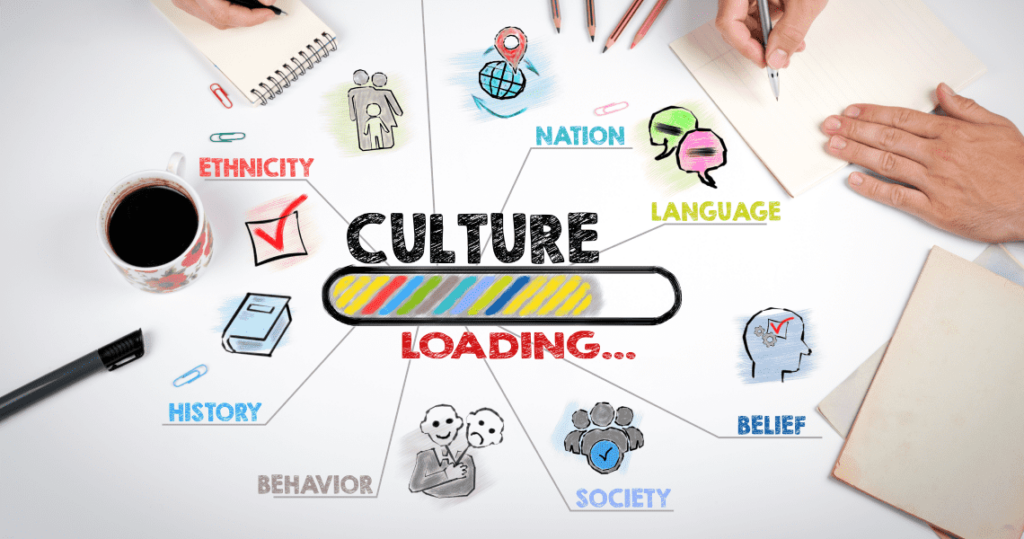
200—that’s the average number of emails in an inbox. Given that crowded field, it’s all too easy for consumers to lose your brand’s marketing emails in the sea of promotional content. So how do you differentiate your emails and make sure that recipients get your messages and take action? By creating meaningful customer relationships where recipients look forward to hearing from you. Building customer loyalty through email is a great way to be heard, drive revenue, boost brand identity, and encourage social sharing. Here are four ways you can take your loyalty marketing to the next level:
This seems like a no-brainer, but creating messaging for your audience should be personalized. This means understanding who and where your buyers are. And sometimes that means taking a step back to look with fresh eyes. You may be surprised that what you thought you knew, isn’t what the data says.
If you’re not sure who your audience is, you can start by digging deeper into Google Analytics. There’s a lot more information than page visits and bounce rates. You can find locations, device use, popular content, and other clues about who visits your site and how they interact with it.
Another way to know your audience is by asking directly in the form of surveys. Surveys are an easy way to collect data on your audience either through automated emails or links at the bottom of regularly scheduled emails. If you’re not getting enough survey responses, or you just want to gather as much data as possible, add an incentive like a coupon or a gift card upon survey completion.
You can also look back into your email send reports and see which campaigns really resonated with your readers. Look for the commonalities in these sends and use those to recreate successes. When it comes to email reporting, don’t get caught up in how many subscribers you have or even in open rates, focus on click-thru rate and the metrics that matter.
Monitoring your brand’s social media profiles is another great way to get a sense of your brand’s reputation and hear directly from customers. Social proof, reviews, user-generated content, and comments can affect customer loyalty more than anything you say about yourself.
Knowing your audience also means knowing your competitors’ audiences. Is there something about your industry that is universal? If your competitor is capitalizing on strategies that are performing well, chances are you should be too—with your own spin on them.

Creating segments based on the number of times a shopper has made purchases or how frequently they engage with content on your website are both excellent strategies for differentiating between casual window shoppers and true fans. When it comes to determining your customer loyalty bases, break it down into five categories. There are many more ways to segment and many more groups you can create, but start with these five before splitting further.
Group 1: Repeat buyers whom you already consider brand loyal. These are the cream of the customer crop, but don’t assume that they owe you continued loyalty. Today, shoppers have more options than ever, and you need to give them reasons to stay loyal. According to a ThinkGoogle report, 81% of consumers in surveyed countries across the globe said they discovered new brands online during the pandemic. That means that customer loyalty is more fleeting than ever—and more valuable.
Group 2: Brand-agnostic buyers who tend to go for the least-expensive, best-reviewed, or most quickly delivered option. Members of this group need to see a difference between your product and a competitor’s. Show them a reason why—all other things being equal—they should choose your brand. Look at these shoppers’ behaviors and find out what motivates them and how you can tap into that. Ask yourself:
There are many answers, but the best strategy for speaking to Group 2 is differentiation. Find your edge and communicate the value through email and other channels.
Group 3: Customers who have purchased once from you. These buyers are critical. Turning a one-time purchaser into a returning customer is the crux of customer loyalty. What can you say or offer in an email to get these customers to make that crucial second purchase? Again, what motivates them? Savings? Extras? Rewards points? Gifts? Free expedited delivery? Emailing an incentive to a buyer who has made a single purchase with you is the best way to get that buyer to make a second purchase. And in that email, ask how the first purchase is working out and if you can answer any questions. Show that you know and care about this person.
Group 4: Shoppers who have expressed interest in your brand by engaging with your email, website content, or social presence, but who have not made a purchase yet. These shoppers are already content consumers but not yet product consumers. You can consider these people warm leads who are hesitant to commit to a purchase. Setting up campaigns triggered by cart abandonment can be a great way of getting some of these shoppers to become buyers, especially with higher-priced products. A cart-abandonment reminder and a small percentage off have convinced many a shopper to complete the transaction.
Group 5: Contacts who have not purchased or engaged yet. You probably don’t know a lot about these people. They’re cold and most likely to trash your emails before reading them or to unsubscribe. Give them a reason to hang on. They’ve already expressed an iota of interest. Now it’s time to email some valuable content like a relevant eBook.
It’s a long way from group 5 to group 1, but it can be done with email nurture campaigns that make shoppers feel known by addressing their needs at the right times.
It’s tempting to focus on group 1. They already love you. But try to remember that all five segments are VIPs. In fact, groups 1 and 2 are the key to new-customer acquisition. Attend to each group differently and appropriately to their journey with your brand.
In order to do that, you need to keep your contact lists fresh, accurate, and up to date. You also need your messaging to be of value and on brand. Don’t send single emails, think bigger about each of these segments and a series of emails in a larger campaign. In theory, you should know the most about group 1, your already-loyal shoppers. They know and like your brand. You need to give them reasons to continue choosing your brand and to also recommend it to others. You can speak more casually and familiarly with them and cultivate a relationship where they feel an affinity for your brand. Protect this group and remember that it’s much easier to keep a customer than to make a new one.
With proper nurturing via email and frequent (but not obnoxiously so) touches, shoppers in the other groups will move through the customer loyalty funnel and join the ranks of the brand-loyal fans who can’t wait to post about the great deal they just got on your amazing product.

Newsletters are a great way to share parts of your business’s culture in a way that feels personalized and somewhat exclusive, but there are other strategies that allow your audience to glimpse into your brand’s mission, culture, and identity. Sharing user-generated content from your social media profiles, highlighting philanthropies your company participates in, and creating employee spotlights are all fantastic ways to humanize your brand. These methods let your readers know there are people and passion behind your brand. The past year has shown us that companies that commit to a cause are rewarded for their support.
Perks. To some shoppers, it’s a magic word. It can mean the difference between retaining a robust repeat-purchaser database and falling flat. The threshold for exceeding your key performance indicators (KPIs) and getting a customer to purchase is much lower when they have already purchased from your brand before. Again, the work of retaining a customer is often less costly than netting new customers.
Identifying, targeting, and rewarding customers can take many forms. Some loyalty drivers that make customers feel both appreciated and appreciative include:
Creating an automated email journey that triggers once someone makes a certain number of purchases is another great way of having a well-curated customer-merchant experience. Making the most of this relationship will pay dividends on your brand’s identity as well as your return on investment (ROI).
Making a lasting impression that invites and incentivizes your customers to return time and time again can seem daunting, but with a few well-executed strategies, you can turn casual pursuers into lifelong patrons, and there’s no better way to do it than with purposeful emails that deliver value while making recipients feel appreciated.
To learn more about how Agital can help you drive sales through email and other digital marketing channels, contact us for your free ecommerce analysis.
